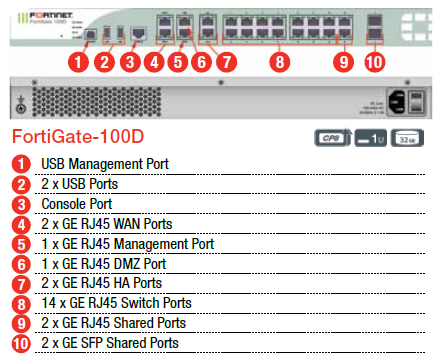Fortigate Software Switch Vs Hardware Switch

Often times it is advantageous to divide up the internal swtich into individual interfaces. Reasons for doing this include additioanl hardware port for routing, or additional ports to implement one-arm sniffers. The following are some of the commands necessary to accomplish this. To put a FortiGate in Interface mode: config system global set internal-switch-mode interface To create a software-switch config system switch-interface edit name (example SW1-3) set member internal1 internal2 internal3 (the names may be different depending on firmware and model, you can use the tab key to scroll through valid names). Set vdom root next end To assign an IP address and management access to the software-switch config system interface edit SW1-3 set ip address and mask (example 192.168.1.1 255.255.255.0) set allowaccess ping https ssh next end For IT Support and InfoSec services in the Dayton, Ohio area please visit our web site at.
Hello,(FortiOS 5.6)the Hardware-Switch on FortiGate 61/81E seems to be limited to the numbered ports (internal1 to internal7), the Ports. Dec 24, 2014 - I did switch the devices from switch to interface mode, but I'm still playing. I think you can get by with hardware/software switches, although.

This section contains information to help you determine which internal switch mode your FortiGate should use, a decision that should be made before the FortiGate is installed. What is the internal switch mode? The internal switch mode determines how the FortiGate’s physical ports are managed by the FortiGate. The two main modes are Switch mode and mode.
Internal switch mode was removed in 5.4. What are Switch mode and Interface mode and why are they used? Alfavit russkij s numeraciej bukv. In Switch mode, all the internal interfaces are part of the same and treated as a single interface, called either or internal by default, depending on the FortiGate model. Switch mode is used when the network layout is basic, with most users being on the same subnet. In Interface mode, the physical interfaces of the FortiGate unit are handled individually, with each interface having its own. Interfaces can also be combined by configuring them as part of either hardware or software switches, which allow multiple interfaces to be treated as a single interface.
This mode is ideal for complex networks that use different subnets to compartmentalize the network traffic. Which mode is your FortiGate in by default? The default mode that a FortiGate starts in varies depending on the model.
To determine which mode your FortiGate unit is in, go to System > Network > Interfaces. Locate the lan or internal interface. If the interface is listed as a Physical Interface in the Type column, then your FortiGate is in Switch mode. If the interface is a, then your FortiGate is in Interface mode. How do you change the mode?
If you need to change the mode your FortiGate unit is in, first make sure none of the physical ports that make up the lan or internal interface are referenced in the FortiGate configuration (for example, in a policy or server). If you FortiGate model has a Switch Controller, you may need to disable it before you can change the internal switch mode. Go to System > Dashboard > Status and enter either of the following commands into the Console: • Command to change the FortiGate to switch mode: config system global set internal-switch-mode switch exit • Command to change the FortiGate to interface mode: config system global set internal-switch-mode interface exit [download-attachments].